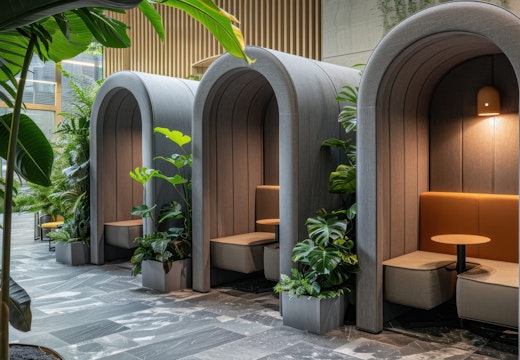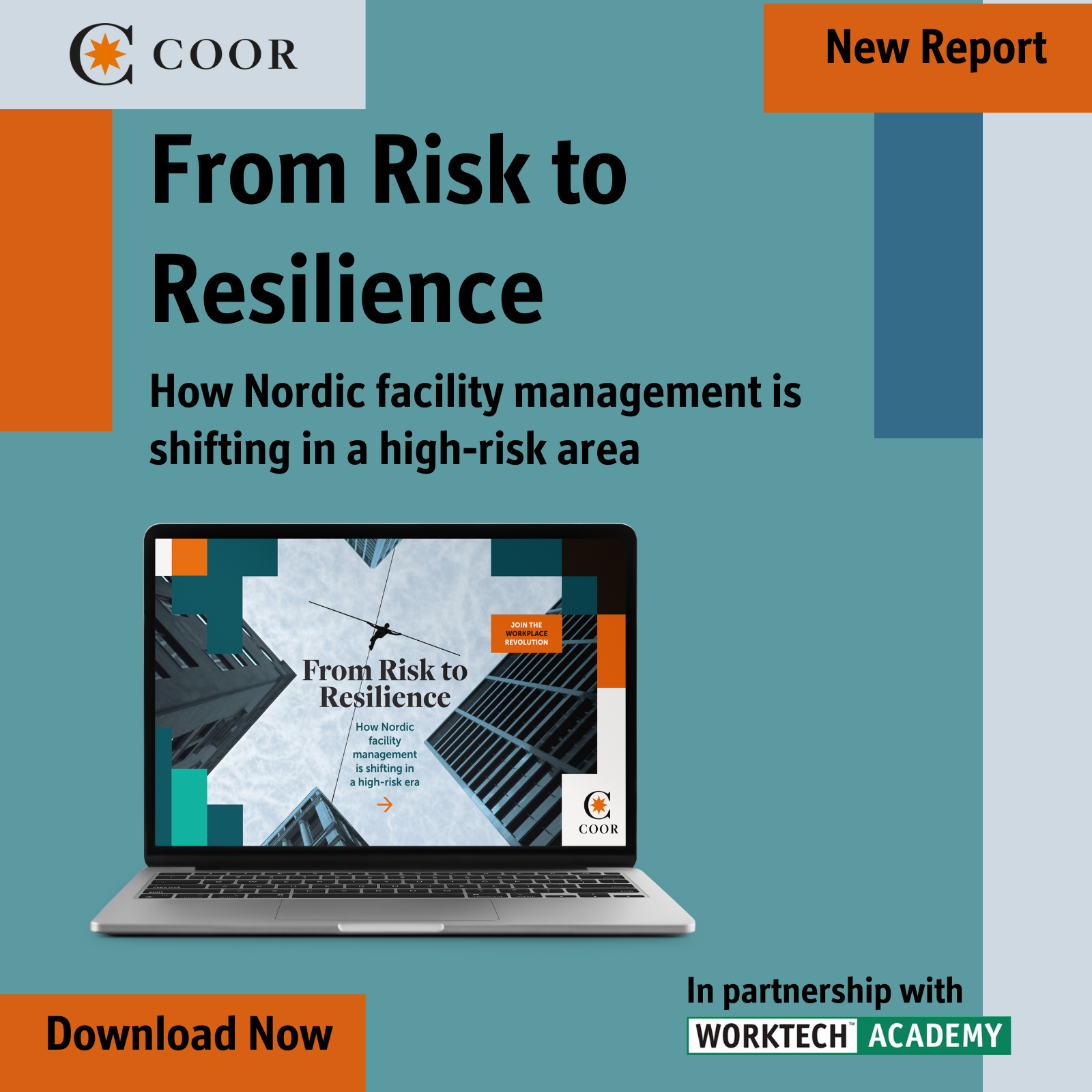All together now: designing for a neurodiverse workforce
New research from the UK sheds light on a complex subject that is increasingly necessary to address as organisations seek to create a more inclusive workplace
New research from the UK on sensory inclusivity in retail environments presents some key principles that can applied to designing for a neurodiverse workforce. Writing in the Journal of Interior Design, Gopika Gopan of the University of Hertfordshire shares recommendations that are relevant in any shared environment and includes information on designing to support visually and hearing-impaired people as well as those with learning disabilities.
For neurodiverse users, Gopan recommends, for example, ‘quiet zones, structured layouts, soft lighting, acoustic treatments.’ The researcher also shares that the most common issues in retail space are sensory overload and anxiety due to bright lights, loud noises, overcrowding and unhelpful retail employees.
‘The most common issues are sensory overload and anxiety…’
Gopan explains: ‘In retail environments, low-glare lighting systems or fixtures with shields should be used whenever possible. Furthermore, loud music should be avoided, and acoustic panels or furnishings should be incorporated to mitigate the noises generated by machinery, customer-staff interaction, and footsteps.’
Good for all
This new study builds on a body of neuroscience research that provides insights into creating places where all can perform to their full potential. As designing to support the neurodiverse can be complex, it can also be handy to refer to these resources: British Standards Institute (2022), PAS 6463:2022 Design for the Mind Neurodiversity and the Built Environment, is downloadable free here; British Council for Offices (2022), Designing for Neurodiversity, is available here.
Good design for neurodiverse people ends up being good design for all. For example, views into spaces (via windows in doors, for example), help people on the autism spectrum feel more comfortable (Willia and Cross, 2022)—and they can make transitions more pleasant for everyone. Users on the autism spectrum function more effectively when they have options for how to use a space (Imidi and Gaines, 2022), as does the entire population. Acoustic distractions are undesirable for autistic (Imidi and Gaines, 2022) and other users trying to focus their attention.
A moderate amount of visual information to process is best for people with ADHD, supporting their ability to concentrate (Halbesleben, Wheeler and Shanine, 2013; Winterhalter, 2016; Abrams, 2022); all users do their best thinking in areas where visual experiences are curated, not chaotic.
Providing work areas with a range of sensory conditions (warmer, colder, brighter, darker, etc.) that support an assortment of activities (more and less focused work, for example), is consistent with activity-based workplace design protocols, which are frequently used today. Options allow people with ADHD (and everyone else) to find a space that aligns with their personal preferences and needs at a particular moment (Halbesleben, Wheeler and Shanine, 2013; Abrams, 2022). Winterhalter (2016) found that college students with ADHD prefer classrooms with views of nature, also a plus for all users.
Small rooms onsite
Synthesising information from multiple sources (for example, Mostafa, 2008; Khare and Mullick, 2015; Imidi and Gaines, 2022; Willis and Cross, 2022) makes it clear that neurodiverse individuals (and workplace populations as a whole) in shared settings benefit from small onsite spaces/rooms with visual and acoustic shielding in which any user (neurodiverse or not) can spend time if they choose to do so.
The neurodiverse can access these spaces when they need to re-calibrate their mental states using coping techniques they’ve learnt over time, while all users can find them convenient after moments of extreme stress such as when a work deadline is imminent. There should be several of these rooms in any set of offices and it is important that they not be reservable, which increases the possibility that at least one will be available to a neurodiverse user when required.
As all can access these spaces, any stigma that might be linked to their use is eliminated. It is important to incorporate these rooms in activity-based workplace design, which provides users with space options.
Design can make it more likely that neurodiverse people can achieve their work and life objectives, while also supporting neurotypical populations accessing the same environment.
Read more of the latest research insights from Sally Augustin in Research Roundup, her regular column in the Innovation Zone for WORKTECH Academy members and partners here.
Research sources
Zara Abrams. 2022. ‘Helping Adults and Children with ADHD in a Pandemic World.’ Monitor on Psychology vol. 53, no. 2, pp. 68-74.
Gopika Gopan. ‘Sensory Inclusivity in Retail Environments: A Design-Oriented Approach.’ Journal of Interior Design, in press.
Jonathon Halbesleben, Anthony Wheeler, and Kristen Shanine. 2013. ‘The Moderating Role of Attention-Deficit/Hyperactivity Disorder in the Work Engagement-Performance Process.’ Journal of Occupational Health Psychology, vol. 18, no. 2, pp. 132-143.
Farzane Imidi and Kristi Gaines. 2022. ‘Creating a Workable Workspace: Office Design Solutions for Individuals with Autism Spectrum Disorder.’ In Anjali Joseph, Lindsay McCunn, and Sharmin Kader (eds.) Health In All Design: Promoting Health, Equity, Sustainability and Resilience Through Environmental Design; Conference Proceedings 53rd Annual Conference of The Environmental Design Research Association). Environmental Design Research Association; Washington, DC, p. 520.
Rachna Khare and Abir Mullick. 2015. ‘Inclusive Educational Spaces for Children with Autism: Development of Ethically Appropriate Research Tools.’ In Nisha Fernano and Greg Barker (eds). Brain Storm: Dynamic Interactions of Environment-Behavior and Neuroscience, Proceedings of the 2015 Environmental Design Research Conference, pp. 81-89.
Magda Mostafa. 2008. ‘An Architecture for Autism: Concepts of Design Intervention for the Autistic User.’ International Journal of Architectural Research, vol. 2, no. 1, pp. 189-211
Katharine Willis and Elizabeth Cross. 2022. ‘Investigating the Potential of EDA Data from Biometric Wearables to Inform Inclusive Design of the Built Environment.’ Emotion, Space, and Society, vol. 45, 100906.
Editha Winterhalter. 2016. ‘Physical Learning Spaces and College Students with ADHD.’ Doctoral dissertation, California State University, Northridge (Department of Education).








